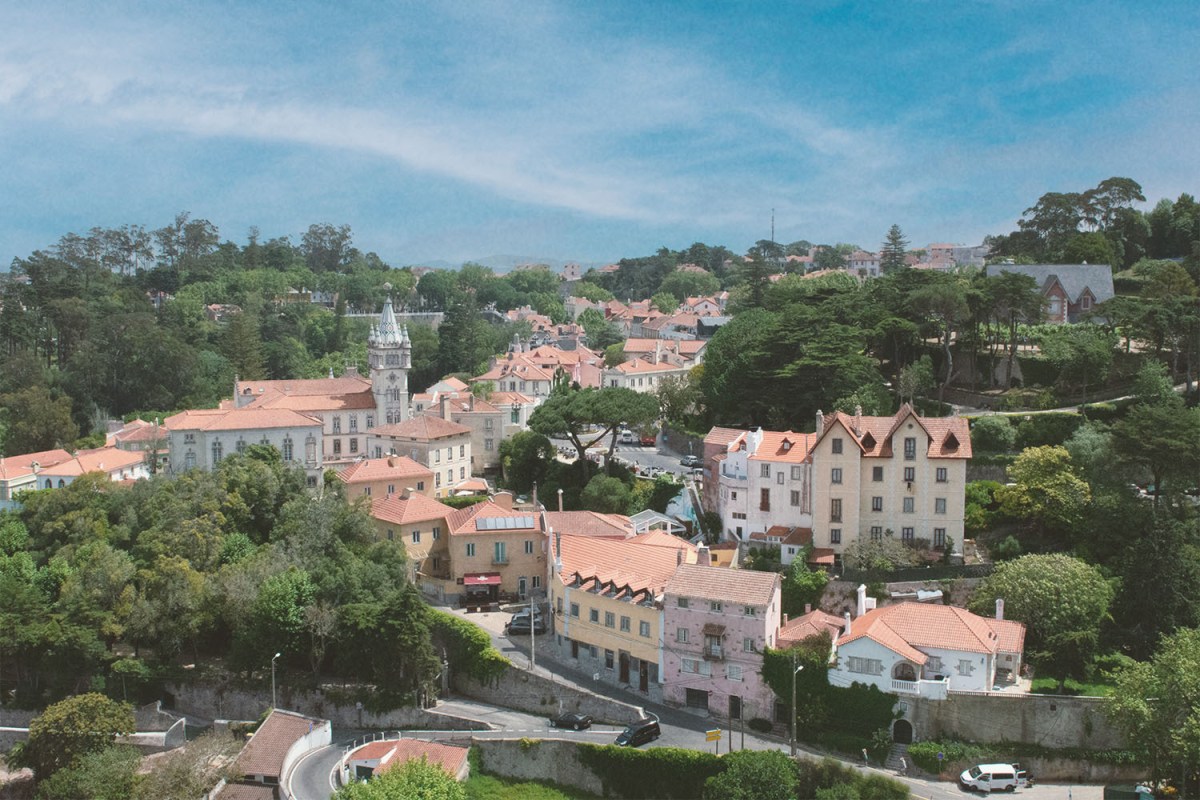A modern city with a backdrop of centuries-old architecture, Lisbon is stimulating as much for its culture as for its sunshine and coastline. If this is your first trip to Lisbon, spread your time in the city between its national history and its contemporary outlook to get a well-rounded view of this beloved capital. Here, in our new series, we offer seven days of activities for a multifaceted visit you’ll never forget — from food to views, and everything in between. By the time we’re done, you’ll be craving a Porto Tónico at least, but the snails are anyone’s guess.
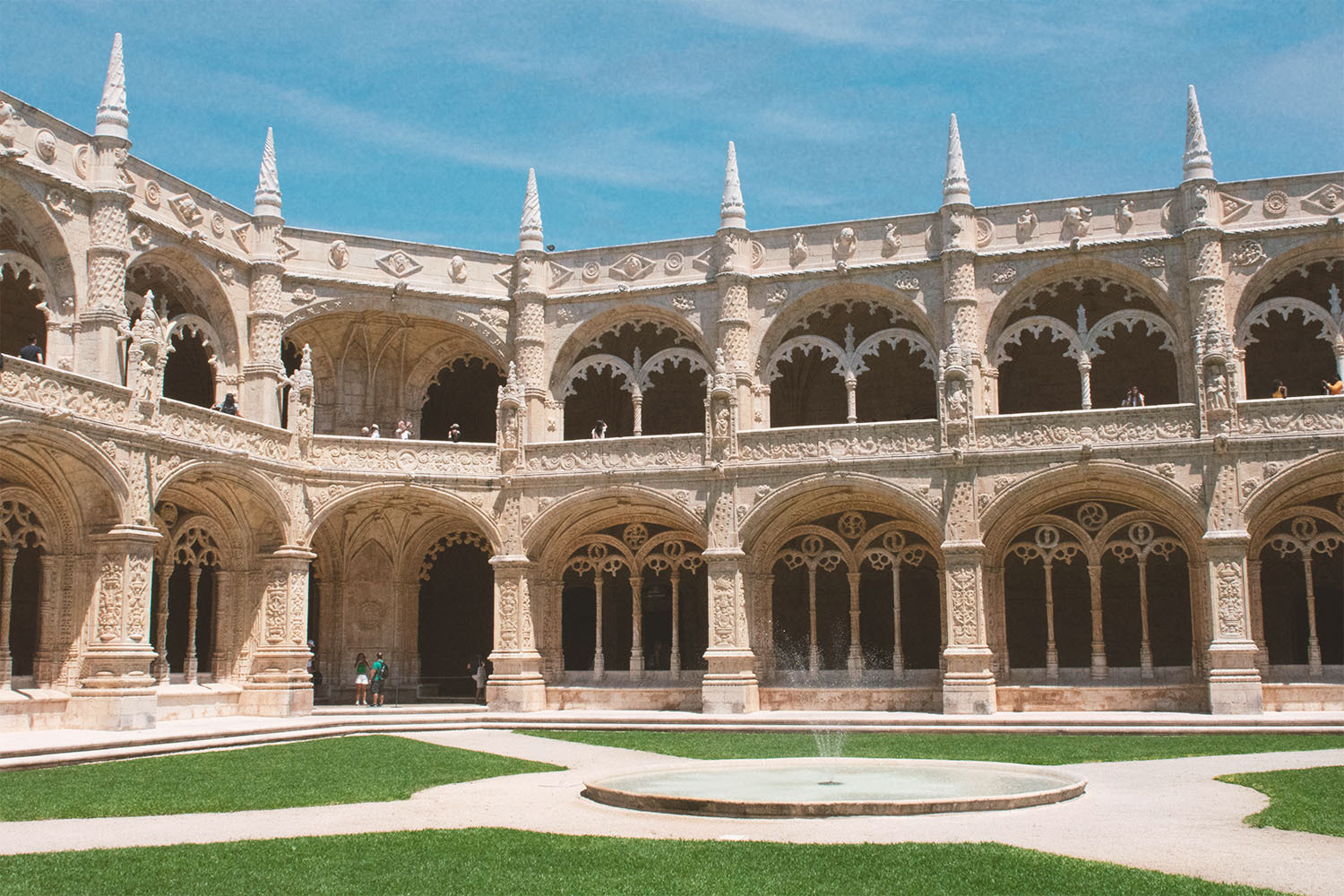
Day 1:

Stay: Palacio Ramalhete.
One stay at this former 17th century palace and current five-star hotel and you may never stay at a “regular” hotel again. Each of the hotel’s 16 rooms was a different, working part of the abode that’s since been done up with luxurious accommodations — you can stay in the former kitchen, and I stayed in the chapel, which had original painted tile in beautiful blues and yellows Lisbon has become known for, as well as ceiling engravings, and the hotel’s largest bathroom. Enjoy their cheese plate with luscious tomato jam on one of their three patios, all in the palace’s interior either beset with even more gorgeous painted tile, under towering bougainvillea, or by their pool, where you can also take a dip. Plus, breakfast is included.

Do: The nearby neighborhoods of Chiado, Bairro Alto and Baixa.
For shopping, sightseeing and architecture porn, these neighborhoods are not far from the hotel and to each other. They can be a little touristy, but there are still plenty of gems too. In particular, Caza das Vellas Loreto in Chiado is a handmade candle shop open since 1789. Conserveira de Lisboa in Baixa has been there for nearly 100 years selling all manner of tinned fish, from mackerel to tuna to sardines.
Pro Tip: If you want to take a car on the way back, it’s easier to do if you’re starting out by the river (Avenida 24 de Julho, Avenida Ribeira das Naus, for example); if not, traffic can be challenging in these popular neighborhoods, especially during rush hour.

Chill: At Doca da Marinha on the Tagus River.
With your tinned fish in hand, grab a seat by the river and watch sailboats go by. Stop into a minimart if you’re thirsty to complete the impromptu picnic. If you prefer a more formal cafe experience, there are two small cafes the size of tiny houses called Banana Cafes with seats for snacks and beverages right there on the Marinha.
Pro Tip: Pedras Limão, a carbonated lemon mineral water available at minimarts, is a top-notch pairing for the salty fish.

Eat: At Solar do Vez.
A short walk from Doca da Marinha is Solar do Vez, a great local tasca, an unpretentious, no frills, traditional Portuguese restaurant. It was here we discovered the joys of Porto Tonicos, cocktails made simply with white port and tonic, tasting of subtly sweet white grapes with a refreshing burst of bubbles. A host of classic Portuguese dishes are on the menu like bacalhau, salted cod, which is great with roasted potatoes.
Pro Tip: At tascas, you’re brought cheese, bread, and olives with your meal, but they’re not free — if you touch them, you do have to pay for them. You can politely decline them, however, when they’re brought over.
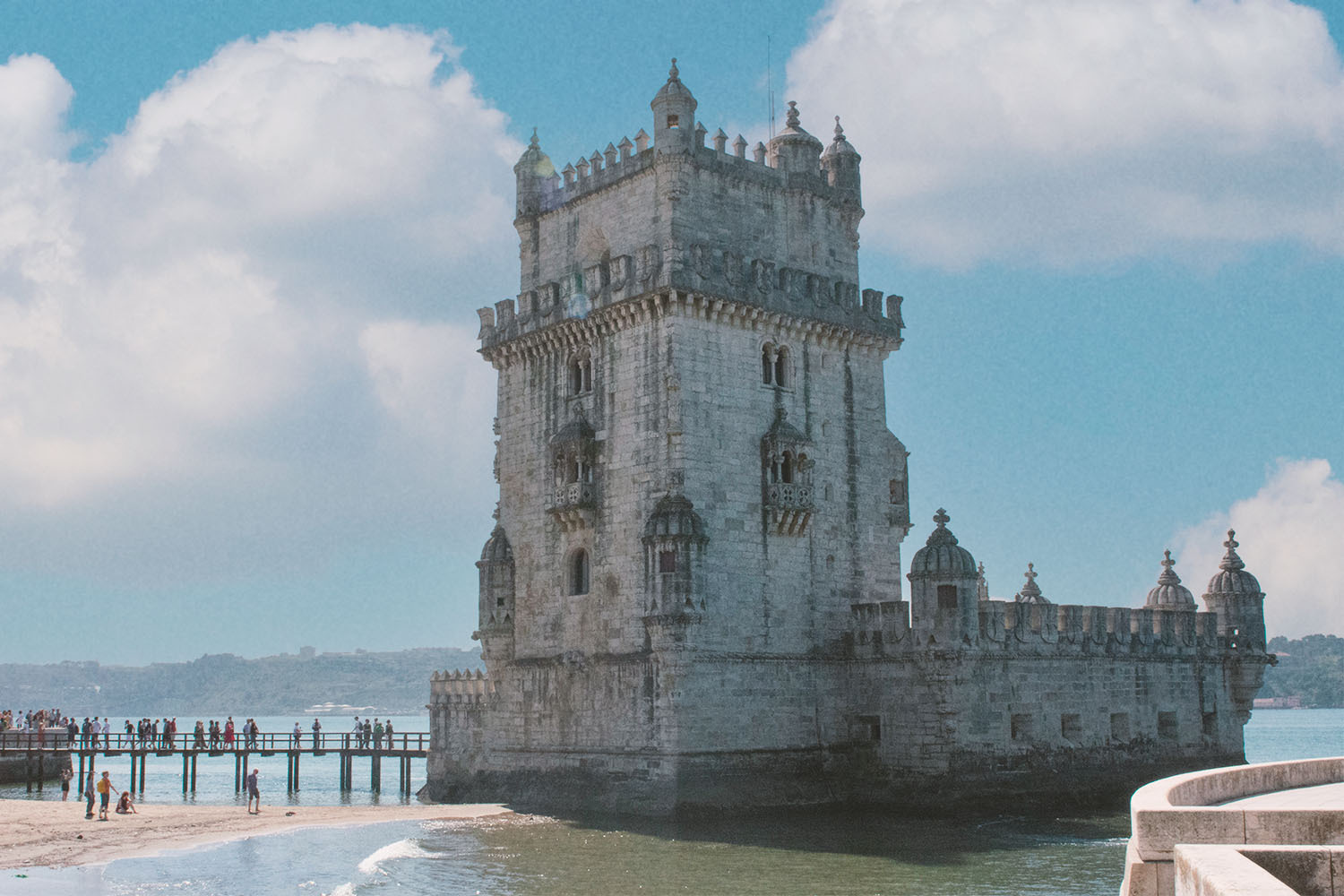
Day 2:

Do: Belém.
An area rich with historic sites, Belém is worth traversing tourists for beautiful views. Torre de Belém and Mosteiro dos Jerónimos are both national monuments and UNESCO World Heritage Sites dating back to the 16th century; the former a tower that launched Portuguese explorer ships and the latter a monastery commissioned by King Manuel himself. In between is the Padrão dos Descobrimentos, an exquisitely carved monument dedicated to maritime exploration. We recommend starting with the Torre de Belém, since it’s the furthest out, and making your way back, stopping at the monument and then at the monastery. Belém is a suburb, but it’s really easy to get there from central Lisbon: you can take a 20-22 minute tram ride (3 euro) from Santos or Cais Rocha, the closest stops to the hotel, to the Lg. Princesa stop in Belém, or a 10 minute car ride (the Ubers in Lisbon are very inexpensive — this will cost you between 6 and 8 euro).

Eat: At Pastéis de Belém.
Open since 1837, Pastéis de Belém is known for Portugal’s most famous pastries, pastéis de nata. The flaky, egg custard tarts arrive hot and fresh.
Pro Tip: There’s often a line to eat at the restaurant, so get single pastries or a pack of six to go and sit in the nearby park. Also, definitely go for the pastries after the monuments unless you want to sugar crash mid-monastery.

Do: The Príncipe Real neighborhood.
This is another great area for architecture porn (read: 19th century mansions) and Lisbon’s signature painted tile, blue and white and yellow and intricate. Stop in at Queijaria, a smart cheese shop that’s the first in the country dedicated to Portuguese cheeses, where the kind staff will let you try its signature items, from Queijo de Évora to Queijo Serra da Estrela and everything in between.

Eat: Petiscos at Taberna da Esperança.
Petiscos are snacks eaten with drinks not unlike tapas, and at Taberna da Esperança prepare to have your mind blown by the Beef Tenderloin with Grilled Portobello Mushrooms and Chili-Chive Butter. Top it off with your new favorite drink, the Porto Tonico, served in a giant goblet-like glass you need to pick up with your entire hand.
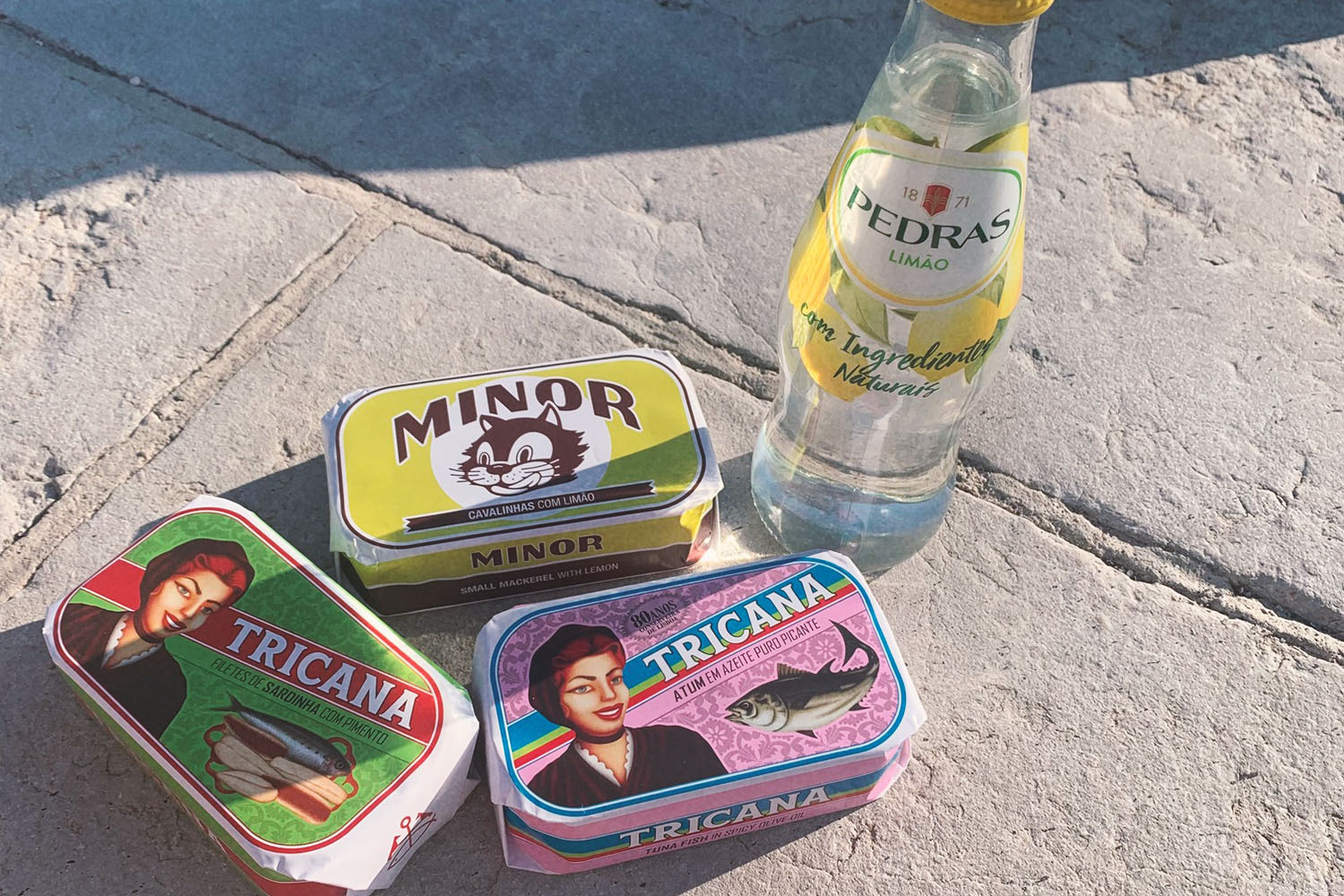
Day 3:

Chill: On the Beach.
Our kind host at Queijaria recommended Praia Nova at Costa de Caparica, and I’m glad we listened. With cheese, tinned fish, and Jamon Iberico-flavored Lay’s in hand, make your way to Praia Nova for gorgeous seafoam swells, surfing, and sun. Note: There’s a surf school on the beach if you’re interested.

Listen: To Fado.
Yes, it’s touristy, but you should still go hear fado music, traditional Portuguese tunes characterized by heartbreaking ballads. A Tasca do Chico is great in particular — packed in with several of your new closest friends, hear local singers with crystalline voices pour their guts out in song.
Pro tip: Make a reservation if you want to sit at a table, but if you can’t snag one, don’t worry–the bouncer may tell you to come back in between sets for a space at the bar. It’s closer quarters and the view is from the back, but the music is still great.

Eat: Post-Fado at Santelmo.
Pop in for sobremesas, desserts — we loved the cheesecake and the chocolate mousse — and wine at this spiffy spot. The waiter was nice to us even though we pronounced the wine varietals incorrectly; you should try a wine from Alentejo while you’re in town nonetheless.
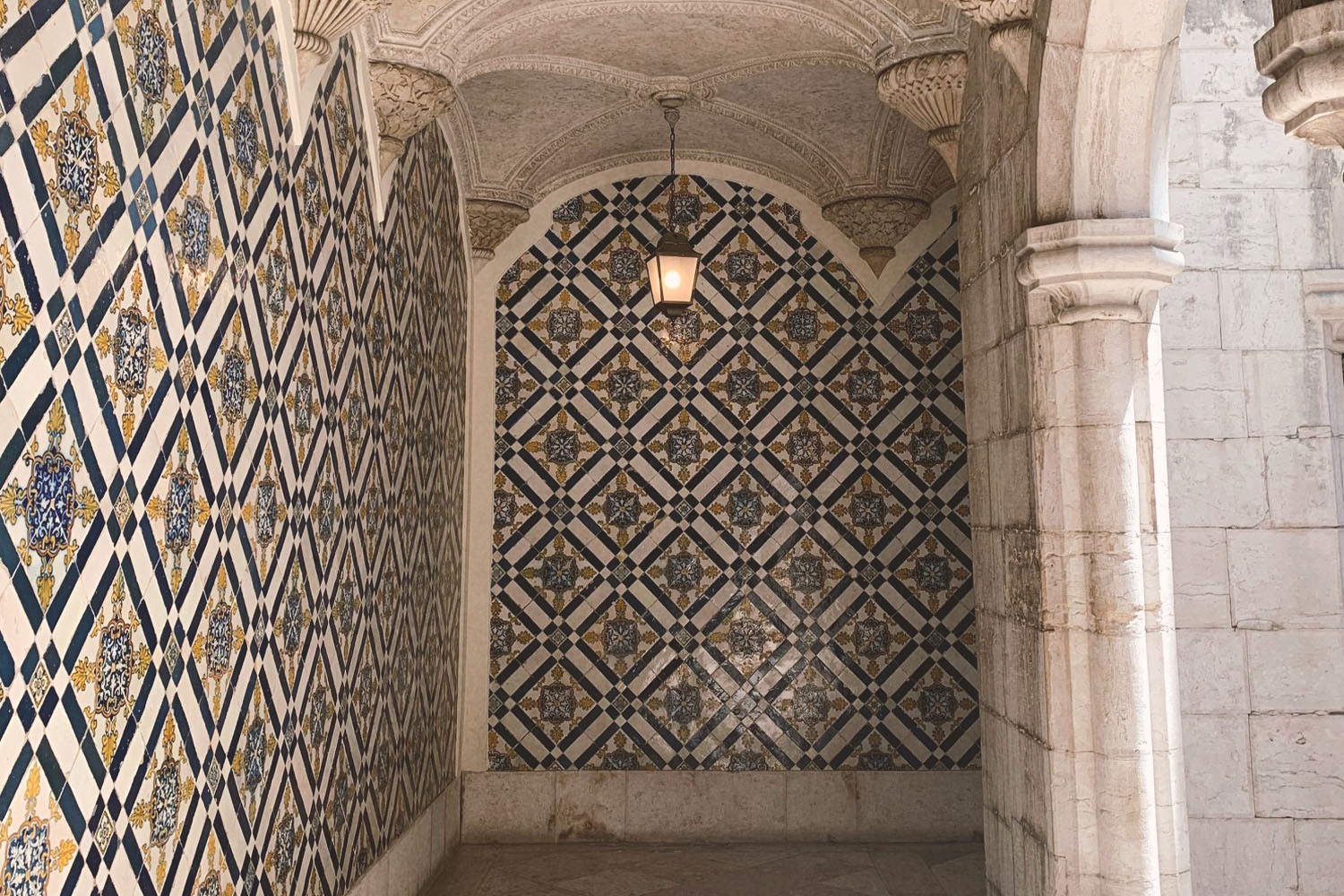
Day 4:

Do: Museu Nacional do Azulejo.
While it might not sound riveting at first, the National Tile Museum really is a stunner. Housed in a former 16th century convent, on view are Portugal’s famous tiles in a host of colorful murals from as far back as the 15th century and as recent as the last decade. It’s truly an artistic education that shouldn’t be overlooked. If you’re peckish, Restaurante Pastelaria Ideal is a lunch joint just up the hill with great pregos, beef sandwiches, for 3 euro.

Eat: Caracóis.
They’re not for everyone, but Lisbon’s seasonal snail staple is definitely worth trying if you’re there in the summertime. The tiny, savory snails are often cooked in a garlic-forward broth and come out piled high on a small plate with a toothpick used for removing them from their shells. The taste is…earthy, salty and certainly an experience. Many places also serve them roasted, like O Palácio, a brewery and seafood restaurant in Alcântara that’s over 40 years old. A small order of caracóis comes with a heaping helping and will cost you only 5 euro.

Do: Castelo de São Jorge
It’s not every day you get to traverse a structure dating back to at least the 6th century BCE, but since you’ll have the opportunity at Castelo de São Jorge, you definitely should. Climb up its different staircases sprinkled throughout at similar heights–just be careful because they’re very steep– to see stunning views of Lisbon. Bonus: the Castelo is also known for its beautiful peacocks, which take up residence in the area.
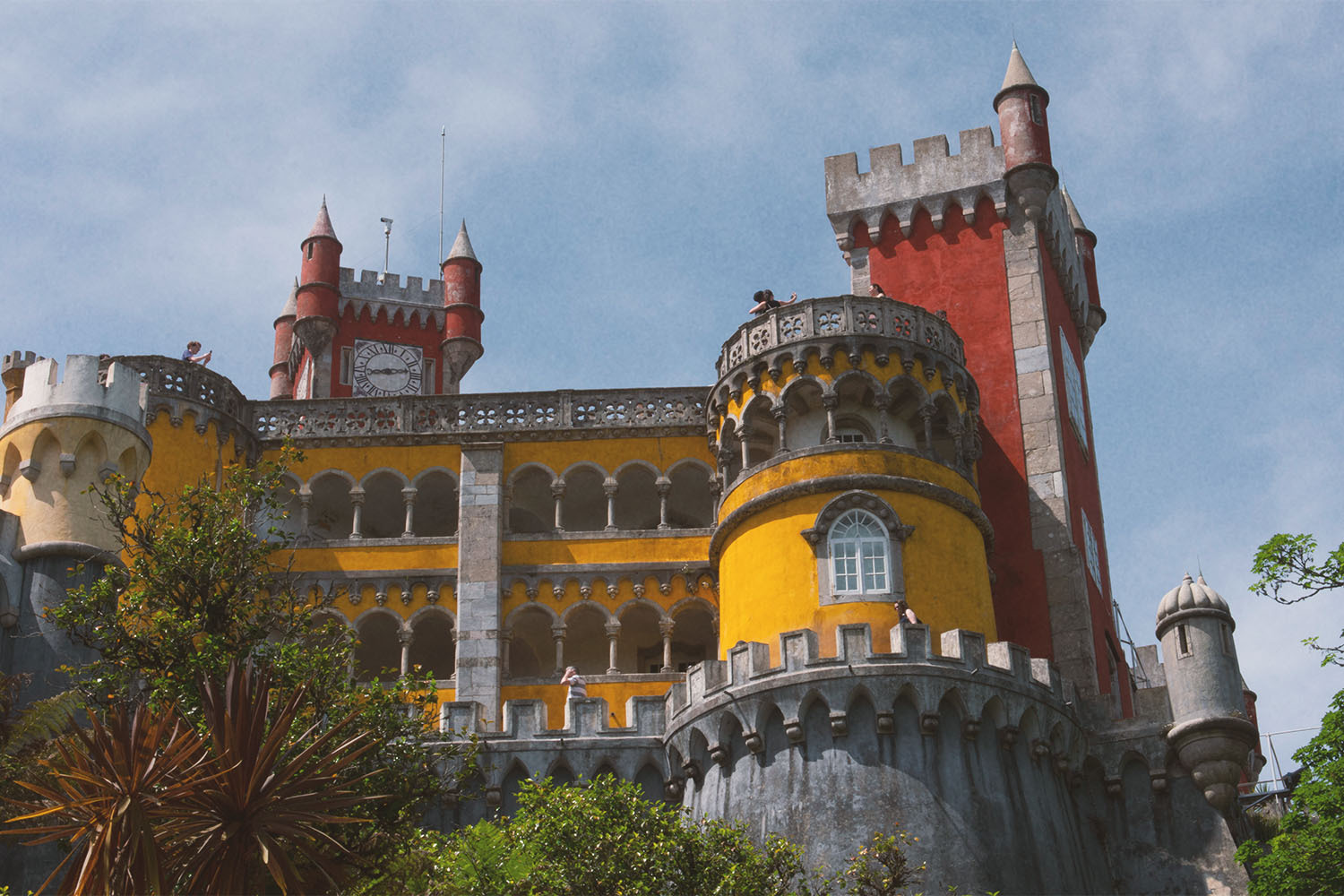
Day 5:

Do: The Palaces in Sintra.
Sintra is a town of curling roads and greenery piled high with palaces and castles. You’ll definitely want to check out the National Palace of Sintra, which dates back to the 10th century and was once visited by nearly every Portuguese monarch of its time. Another castle of your dreams is the Pena National Palace, a fantastical combination of tile, sculpture, and color–it was originally built in the 12th century but devastated in the 1755 earthquake that rocked the region and eventually rebuilt.
Pro Tip: Try to go either earlier or later in the day to avoid crowds. You can get to and from Sintra by train, or you can take an Uber. It’s about a 30 minute drive from Lisbon and will cost you between 22 and 35 euro each way, depending on traffic and time of day.

Eat: Petiscos and Travesseiros.
Everything in Sintra is touristy, but for a slightly less touristy lunch, try the petiscos at Tascantiga, and visit Casa Piriquita, established in 1862, for dessert: their travesseiro pastries, filled with almond cream, have become famous since they were first made in 1940.

Watch: The drag show at Finalmente.
Finalmente is a gay club which has been offering drag shows for nearly 50 years. Shows start at 11:15pm, and fairly promptly, so make a reservation and watch as fabulous drag artists in gleaming costumes offer you everything from disco to flamenco to top 40.
Pro tip: You don’t tip the performers at Finalmente because it’s more like a cabaret or old school floor show. Just enjoy and applaud and play along if the performers engage with you from the stage (and they probably will!)

Day 6:

Do: LxFactory.
Nestled in Lisbon’s Alcântara neighborhood, LxFactory has become home to part of Lisbon’s creative life, with artist studios, stores, restaurants, bars and more all dotting the area. If you happen to be there on a Sunday for their outdoor market, expect cool finds from local artisans. I walked away with small art prints for 3 euro and a hand-screenprinted linen dress, but there’s also vintage clothing, ceramics, leather goods, and more. Note: While the start time is listed as 11am, most vendors aren’t ready to go until about noon or later, so take your time getting there.

Eat: At Batata Doce.
This thriving restaurant from chef Isabel Jacinto combines her Angolan heritage with her present in Portugal for a fusion that’s far from pretentious. Enduring atrocities of war first hand in Angola with the Portuguese Colonial War of 1965, she turned her experiences into down-to-earth cuisine that has garnered her attention from multiple continents. If you want to visit Batata Doce, which means “sweet potato” in Portuguese, you’ll have to make a reservation because it fills up fast. If you’re hesitant about doing it over the phone in English, the hotel can make one for you in Portuguese.

Drink: At Foxtrot.
A beloved cocktail bar for nearly 40 years, Foxtrot’s art deco-inspired interior is always filled with locals. But the coolness of Foxtrot doesn’t stop at the decor — while you can certainly choose a drink from their menu, bartenders will also mix you a drink based on your own flavor preferences.
Day 7:

Do: MNAC: Museu Nacional de Arte Contemporânea do Chiado.
Located right in Chiado, MNAC is great because it puts Portuguese artists at the forefront of its exhibitions and collections, which feature everything from painting and sculpture to photography and illustration and more.

Eat: At Le Chat.
Finish your time in Portugal with a dinner overlooking the Tagus River. Le Chat is a small seafood restaurant nestled at the edge of Jardim 9 de Abril, all glass and umbrellas as if for this express purpose. As the sun sets, indulge in sauteed prawns in pineapple chutney and Octopus with chorizo and roasted potatoes, and their caramel brownie for dessert (served in a ramekin, it’s more like a souffle, but it’s dreamy and gooey nonetheless).

Drink: At Matiz Pombalina.
Consistently ranked one of the best cocktail bars in Lisbon, Matiz Pombalina has been open for 12 years. It’s known for its dedication to classic cocktails, but it’s not afraid to experiment, either. This makes it a classic in its own right, a local haunt known as much for its stone walls–it was previously a residential building– and Louis XIV-inspired armchairs, as for its drinks.
This article appeared in an InsideHook newsletter. Sign up for free to get more on travel, wellness, style, drinking, and culture.
